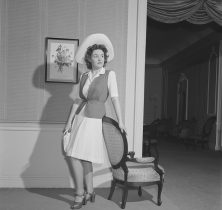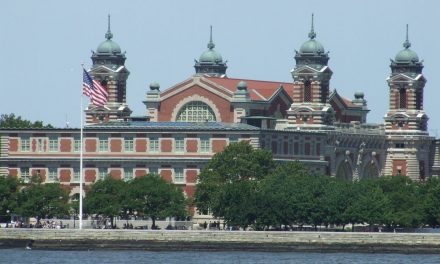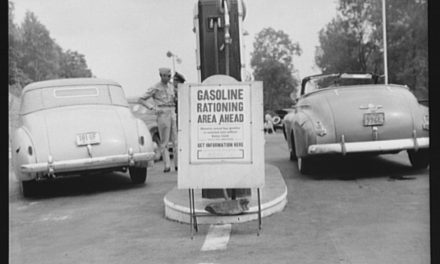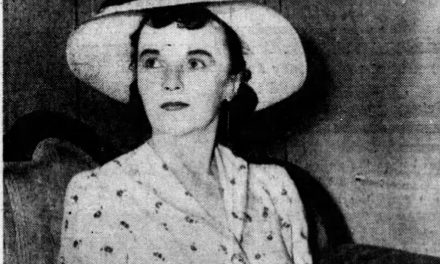On Dec. 21, young women gathered at Lord and Taylor’s NY fashion party to behold some of the most dazzling fashions of the day. The eager spectators crowded around a pink Christmas tree adorned with popcorn garland. All were taking in the looks that will likely make their mark on the New Year.
The looks on display included dresses in rose, navy and grapefruit colors, embroidered frocks and pieces marked with bold prints or frills.
Even though these styles may have seemed opulent at first glance, in fact they reflected a year of fabric shortages.
Audience members saw the effects of the shortage in the plunging oval or square necklines and short skirts. Because more fabric is needed to clothe soldiers in the war, hemlines have seen the most significant and rapid change.
As recently as last January, New York’s Fashion Futures event celebrated floor-length silk and taffeta gowns with accents in dark green and gold. Many of the styles featured lavish embroidery and sharp, angular padding at the shoulders or hips.
A year later, simplicity rules. While today’s designers still play with colors to some extent, the majority of designs have muted colors such as light pink or blue. This stylistic choice was the result of restrictions on the use of dye vats. In addition, rayon-cotton blends have replaced the days of silk and finer fabrics.
Despite the fact that the shortage hit the American people fast, some reports predicted this situation from the outset of 1942 or earlier. For example, in February of this year, War Production Board (WPB) officials explained that ration cards for clothing were inevitable.
They said much of the country’s rayon would be set aside for production of military materials instead of civilian clothing. Because of this, cotton and wool have become popular substitutes and restrictions on the use of dye vats have led to lightly colored clothing.
Other reports, such as a 1941 fashion review from The Washington Post, said that this year’s styles would benefit women at work and usher in an era of practicality, defined by fitted clothes lacking embellishment. Silhouettes would be simpler, straighter and lacking the experimentally sharp angles that characterized the 1941 designs. This would serve the dual purpose of keeping fabric use to a minimum while also allowing women to work without excess clothing getting in the way.
True to these predictions, many of the garments and accessories that designers are producing place value in practicality and safety over style. This year saw the advent of the Lilly Dache hat, an accessory by inspired the headgear that some factory workers are required to wear.
High heels have also gone out of style in favor of the walking oxford for women, a typically leather shoe with only a slight heel to make mobility easier.
As a matter of fact, a number of outfits and trends of the past are now considered unpopular in the face of war needs and shortages. Among these outdated fashions is the zoot suit, labelled an undesirable look because of its excessive use of fabric as compared to other apparel. In a similar manner, men’s pleated shirts and pants are largely a style of the past.
Other restrictions had an impact on this year’s fashion. Fuel rations mean warmer, durable clothing is an essential for the American people. While this may seem paradoxical given the fabric shortage, wool and cotton have been a remedy for this issue. Both cloth types are in relative abundance when compared to materials such as rayon.
Especially in this time of year, cotton and wool cover-up evening dresses, long underwear, quilted frocks and jackets have come into style. In addition, new looks, such as women’s shawls, have grown in popularity as fuel rationing began and Americans sought new ways to keep warm.

A model wears a typical afternoon dress for a spring 1942 fashion show presented by the Chrysler Girls Club at Saks Fifth Avenue in Detroit. Photo by Arthur S. Siegel, from Library of Congress.
Though the reality of war has brought significant changes to the fashion landscape, citizens seem compelled to adapt out of a strong sense of patriotism.
In a February interview, a WPB official explained that he was getting the most use he could out of his pleated shirts before public backlash began.
“I’m wearing this out because I’m afraid someone might throw a brick at me if I walked down the street with it a couple of years from now,” he said.
The public’s seemingly complete willingness to comply with changes brought about by war shows its dedication to the cause. However, this WPB official could be onto a larger question. While dedication on the home front is likely a critical advantage to success abroad, could those who fail to conform be in some type of jeopardy?
Between newspaper coverage and statements from military men, it would seem that nonconformity could have potentially disastrous implications.
Many news reports have linked fashion with the war effort, whether it be dressing to impress men in uniform or how fashion in the military itself is an important part of a soldier’s morale.
Major Frank Steadman, of the Research and Promotion Division at the Army Quartermaster’s Depot in Philadelphia, explained that it is important for the American people to comply with rations. He said that, in doing so, they are helping military men wear a uniform of which they can be proud.
“Questions of morale and conservation are indissolubly tied together,” Steadman said.
Apparently, this link can work in both directions. According to a report from August, the fashions displayed in branches of the military can also have a significant effect on public morale.
Women at the Navy Annex in Arlington, Va., on Aug. 28 reportedly showed strong enthusiasm and appreciation for the Women’s Naval Reserves’ uniforms during a WAVE fashion show. At this event, attendees admired the WAVE uniform and had the opportunity to learn more about the corps.
In-keeping with the sentiments of contemporary fashion, the women said that they were captivated by the simplicity of the uniform’s design, particularly the “simple lines” and tailored neckline.
From the various connection between fashion and the war, it would seem that, this year, Americans will be wearing their patriotism on their sleeve.
Sources:
Baldwin, Nona. “Waves Uniforms Stir Enthusiasm At ‘Fashion’ Show in Washington.” New York Times, August 29, 1942, p. 12.
Bryant, W.C. “Clothes Ration: Inevitable, Officials Say; May Not Be Put Into Effect Before Year-End By Then U.S. Wardrobe Will Be Entirely Altered Under Orders About To Be Issued Less Worsteds, Lighter Colors Clothes Rationing Inevitable But It May Not Come for Months.” The Wall Street Journal, February 24, 1942, p. 1.
Driscoll, Jane. “Trends For New Year.” The Washington Post, December 28, 1941, p. S8.
Hardesty, Corrinne. “Women’s Fashions Underwent Many Changes in 1942.” The Washington Post, December 30, 1942, p. B2.
Hendler, Charles A. “Uniforms Fashion for Men Today.” The Philadelphia Inquirer Public Ledger, December 26, 1942, p. 14.
Pope, Virginia. “FASHION FUTURES OPENS IN SPLENDOR.” New York Times, January 9, 1941, p. 25.
Pope, Virginia. “Fashions Dictated by the Man in Uniform; ‘Flirt’ Colors Prominent at Style Showing.” New York Times, December 29, 1942, p. 29.





